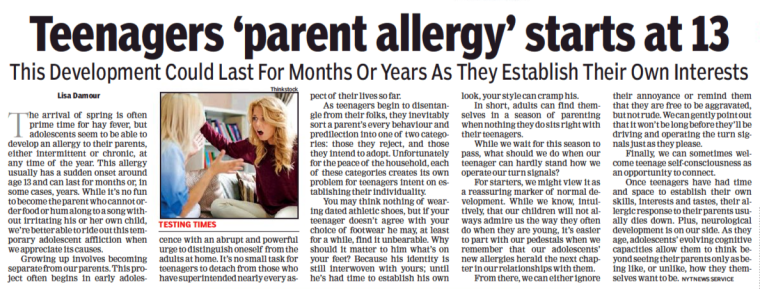As Mark Deuze would tell you in his 2005 article on journalism, there are five ideological values that journalists swear by across the globe — public service, ethics, objectivity, autonomy, and immediacy. If you look at them closely, you will find that journalists believe their work is in the interest of the public and is governed by legitimate rules and boundaries. For doing so, they feel they should remain independent, unbiased and under no pressure to twist facts. Above all, they think they have a good judgement when it comes to choosing what news should be presented and what can be ignored. Yes, there is a process where certain news items are left behind so that enough room is created for the important ones. But, what is news?
According to Oxford Dictionary, the news is a newly received or noteworthy information, especially about recent events and a journalist is a person who writes for newspapers, magazines, or news websites or prepares news to be broadcast. Effectively, the news is any piece of information that is useful to you. It could be that your cab is ten minutes away, you are running out of red chilli powder, you are pregnant or that your child has a fever. However, none of these seem to have journalistic values, which is to say that it matters to a huge number of people. For example, if you are a celebrity with a million followers, your pregnancy sure is news. If you are someone who lives in an area with a large number of mosquitoes, your fever is news because it could mean that the situation might be getting worse. But who decides this? That’s when the second aspect of news comes into the picture — a journalist or a group of them, really.
A group of journalists put their heads together to decide which news is important and which is not. Is the news of 14 people dying in a fire at a pub more severe than 12 workers dying in a fire at a farsan factory? If you look at the kind of coverage media gave to the Kamala Mills fire and the Sakinaka fire within a few weeks of each other, you will realise that though fire and alleged negligence caused both incidents, the former was all over, while the latter was among several such cases, unworthy of media attention. Now, if you look at the number of follow-ups and feature stories about the life of the deceased individuals, you will realise that the reporters and editors behind them must have made several judgement calls to zero down on the kind of importance these incidents deserved.
The calls in the above example were based on factors, which majorly include readership and how relatable the incident is for the readers. Since a certain amount of literacy is required to be able to consume news, especially in the written form, it can be assumed that the Kamala Mills fire was closer home for the affluent class, who can afford to party if and when they feel so. On the other hand, it isn’t a secret that a large number of people work in extremely hazardous conditions in the city. Also, these people are unlikely to be the readers of these newspapers. The shock value, in this case, could have triumphed and bumped the mill fire to a higher position in the ladder of importance. However, what if you, as a reader, feel otherwise? Could it be that you feel differently from an editor on what is news?
The news is often said to be governed by the five major factors — timeliness, proximity, human interest, conflict and prominence. Anushka Sharma and Virat Kohli’s marriage was on the front pages of all major newspapers because they are celebrities, the news broke a few hours before the paper went to print, rumours about them had been going around for a while and people were interested to know about the wedding. In this case, probably the only value not at play was conflict. Also, the interesting aspect here is a very subjective thing. It highly depends on the editor.
The fact that most papers had this news on the front page brings in an important factor in the scenario — news is often what is covered by all. In fact, such is the case that often most papers give the same kind of coverage to a news piece. This is subject to space availability and matter that a reporter is able to get hold of. The more exclusive the content, the better is the report. However, what remains same, most of the time, is the weightage given to the piece.
Now, when we say that news is the matter a reporter is able to get hold of, another aspect comes into fore, the fact that not all news is inclusive. It might not be the real or complete picture. Getting back to the example of dengue from a couple of paragraphs before, we can think of a possibility that a reporter knew of only four deaths in a neighbourhood before their deadline because either they weren’t given proper information at the hospital or that they missed a detail. So, assuming the real number is six and all papers carried it as four (because that’s the official statement), does that mean the casualties were indeed four? What if one paper says two people died and one says seven? Would the reality change just because the ‘news’ states it differently? Can you really consider news to be the truth? Please do dwell on it a bit before you read further.
That will be all. Now, moving on, even if different newspapers state different numbers, you are unlikely to know the difference because you may not read the same news in different newspapers unless the topic is really important to you. In all likelihood, you will believe what your newspaper tells you. There are a lot of instances of different newspapers spelling the names of victims and accused persons differently because there are deadlines and not everything can be confirmed before the paper goes to press. Also, it could be a silly mistake by the reporter or the person who edited that story.
So, after everything is said and done, the fact remains that factual news too cannot be considered complete and absolute fact. However, it is factual enough for a reader who doesn’t have the resources, the resolve or the need to uncover real facts.
Broadly speaking, one can say that what is printed in a newspaper or broadcasted on a news channel is news. However, would it be right to say that things that are missed aren’t news? One of the most important aspects of news generation is that is in indeed generated by humans, who are employees of an organisation. This means that are there are always chances that stories can be missed out. If a piece is ignored by all, it could mean that it was intentional. However, if it was missed by a paper or two, it could mean that they didn’t have a reporter for that beat on duty that day or maybe they just did a mistake. In any case, just because your paper didn’t cover it, it doesn’t mean it didn’t happen or that it isn’t news.
An essential and functional aspect of an information is documentation. No matter how many discrepancies, it’s always better an event is documented rather than be ignored. To have different versions, simply mean that more number of people were involved in news generation. Often, the official version is what dictates what is believed to be true. This streamlines things a bit but it also makes it difficult for doubts and questions to be raised. Even if questions are raised, the truth may depend on who’s answering it.This essentially means that all news pieces are manufactured as they give us only a version of the actual story. So, really, what is news anyway?

Jagruti Verma
With a little experience of feature writing and subbing on her resume, Jagruti strives to get better with each piece of writing she works on. You can connect with her on Twitter at












